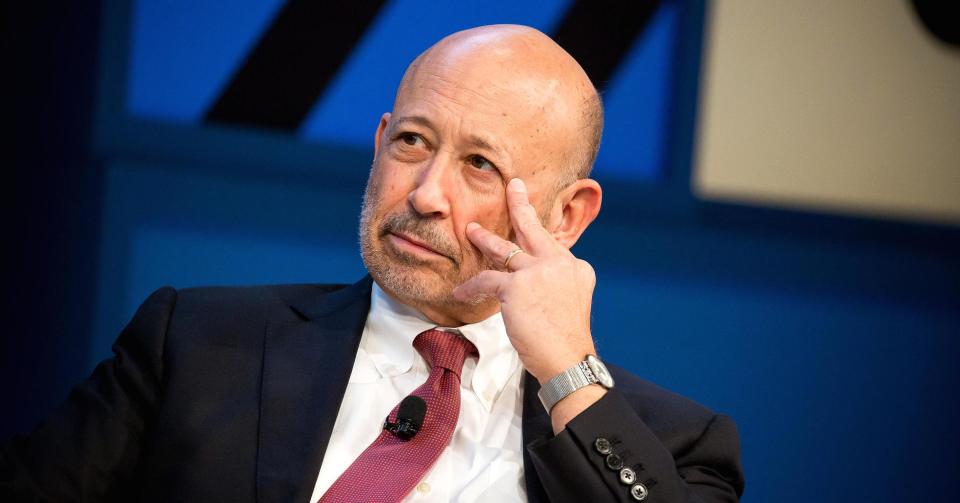What Goldman Sachs can learn from the US Army

Col. (Ret.) Robert Hughes is a clinical assistant professor and senior program director of executive education at Kellogg School of Management at Northwestern University.
Goldman Sachs (GS) Group Inc’s move to increase the amount of feedback employees receive is part of a new real-time system that supplements the annual review process. However when it comes to creating a “feedback culture,” Goldman Sachs’ efforts do not go far enough and their leaders could learn some valuable lessons from the U.S. military.
In my 28 years in the U.S. Army, I came to appreciate the military’s feedback culture that is the backbone of continuous improvement for leaders, individuals and the organization. While the Army also has a performance review system, a hallmark of their feedback culture is the use of “after-action” reviews. The objective is to obtain a “snapshot” of what occurred — what went well and what did not — while the experience and data are still fresh. Discussion occurs in a “psychologically safe environment” that is neither punitive nor evaluative to foster honest and open sharing.
Making the after-action reviews unique, leaders of all ranks come together for a candid, professional discussion to explore what they could have done better and accept team feedback. The objective for one and all is learning from the most recent action so that strengths can be sustained and errors or shortcomings can be fixed with the aim of achieving better outcomes the next time.
A growth mindset in 3 key areas
Business organizations would do well to heed the military’s example, which seeks to promote a growth mindset in three key areas. First, the leaders themselves need to proactively ask for and be open to receiving honest and candid feedback. Second, leaders need to provide individuals with feedback focused both on performance and potential. And last, leaders need to establish a safe environment that fosters feedback among all team members so that the team or organization, collectively and individually, can learn from success, failure and everything in between.
Learning from failure is a well-known strategy, especially in the technology sector where the mantra is “fail fast” to encourage experimentation as part of ongoing development. But large organizations often do not have the mechanisms in place to gather or encourage real-time feedback. Once-a-year performance reviews, which are often tied to compensation, are not the right venue for delivering feedback that’s meant to improve performance. Annual performance feedback is simply not sufficient to improve performance and stimulate growth.
The ‘5 Ps’
Real-time feedback is hardly the new norm, but it is being practiced more commonly in some large, well-established organizations the likes of Goldman Sachs and General Electric (GE). For leaders who want to take feedback to a higher level in their organization, the “5 Ps” — adapted from my experience as a military leader and a member of countless teams and task forces — provide guidelines:
Prioritize: The “after-event” or “after-action” feedback session is prioritized within the organization by the leader who seeks to establish a feedback loop in real time. It’s a learning event, not just another meeting.
Plan: The leader develops a plan to make feedback-gathering part of a specific event, or at certain intervals or milestones within existing business processes.
(Make) Psychologically safe: The leader sets the tone and establishes an environment in which it is safe and comfortable for others to discuss and share feedback — peer to peer, as well as direct report to leader. The environment is free of any punitive overtones or fear of repercussions.
(Be) Present: Eliciting and discussing feedback cannot be delegated. The leader needs to be present at the session.
Participate: The leader must participate in the discussion and show some humility by identifying what he/she did well as well as areas in which to improve. But the leader should not dominate the conversation, so that it remains a participative, self-discovery session and not a critique.
A culture of real-time feedback also helps engage millennials, who desire—and require—more feedback. For example, IBM (IBM) changed its feedback system in part to meet the needs of these younger professionals. Millennials are known for having grown up with feedback loops, and typically want ongoing conversation. While technology and apps will contribute to feedback conversations, leaders must find the right mix of face-to-face and technology enabled interactions. Most important, it remains a leader’s role to connect with people in a zone of safety to talk about performance and improvement.
Here, the leader can also become a powerful role model in what I consider to be the classic definition of feedback engagement: fostering intentional conversations, both informal and formal, that open the door for growth — the leader’s, others’, and the team’s. Specifically, the leader can set the example within the organization by demonstrating his/her commitment to growth and improvement by frequently asking for feedback after a particular event, activity, or exercise.
The manager who asks his/her team for feedback as well — how effective was this approach — will provide a powerful lesson on the growth mindset that supports improvement and performance and encourages feedback from all team members. And this must be done in both real-time and on an ongoing basis to support a feedback culture.
More on business and the US military:
Why companies need veterans in their workforce
How can companies support veterans this Memorial Day? Hire them
Veterans group uses Trump’s well-known habits to target him with an ad

